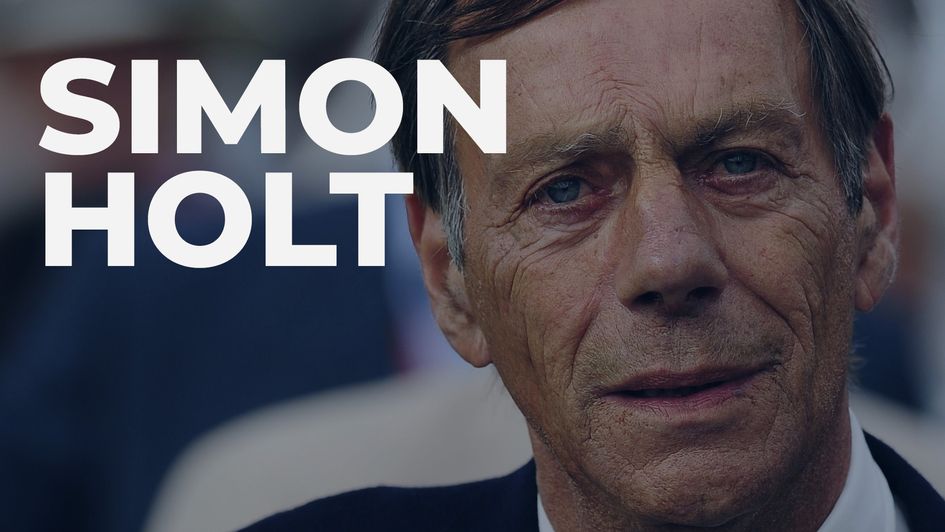Ahead of the Betfred Derby, Simon Holt remembers a pre-Epsom visit to Sir Henry Cecil and the great trainer's magic touch with horses and peas.
In the early, frosty weeks of 2008, an email arrived from South African trainer June Casey asking if she could come and stay for a few days.
I had met June during a three-week commentary trip a few years earlier at a time when South African racing was getting more coverage in British betting shops. The idea was that by inviting a British commentator to call a few races, punters might recognise the voice and become a bit more interested.
She had two favours to ask. First, she wondered if it would be possible to arrange a visit to see Henry Cecil, who she had worked for at Warren Place some years earlier.
And, secondly, she wanted to see the racecourse at Epsom where Cecil had sent out four Derby winners.
It wasn't the first approach to Sir Henry (knighted in 2011), who I hardly knew at all, and some time earlier there had been a similar request from a man whose wife was dying of pancreatic cancer.
Cecil came straight back "by all means" and, on another chillingly cold day, we met the legendary trainer in his office, surrounded as ever by his collection of toy soldiers, before being shown around the gardens and the stables.
It was a lovely experience. Green-fingered Henry was always proud of his backyard and, not for the first time, he described the historic nature of a patch of peas, the seeds of which were supposedly discovered in the tomb of Tutankhamen.
Nobody will ever know if the story was true.
At the time, Cecil was beginning to emerge from a prolonged trough in his career as a result of Sheikh Mohammed removing all his horses.
But, out in the yard, he reported "I have some ammo again", and we saw Passage Of Time, Twice Over and Light Shift, the horses who would eventually push Warren Place back into the limelight.
When June arrived, the atmosphere was more buoyant. Light Shift had given Cecil an eighth Oaks win the previous summer and, while the arrival of Frankel was still a couple of years away, things were looking up.
He recognised June immediately and there was a definite twinkle in the old rascal's eye as they talked about the past.
Feeling a bit of an outsider, I asked if it might be possible to wander around. He seemed pleased: "By ALL Means!"
Inevitably, they too headed off to the garden and Tutankhamun's pesky peas.
The following day, we walked the whole of the Derby course at Epsom, and June could not contain her astonishment that the most famous race in the world is run on such an unusual, challenging course whereas most tracks in South Africa are flat ovals.
As has often been said, the first five furlongs of the iconic mile and a half rises to the height of Nelson's Column, followed by a steep tumble down run to Tattenham Corner.
Then that further test of balance up the home straight where the track cambers down steeply from the outside rail.
It is the ultimate test of a racehorse and, for anyone who loves horse racing, a walk round is strongly recommended. The downland course is on public land and free to roam, but it's best to go in the afternoon by which time the horses trained in Epsom have returned to their stables.
One would think that most horses would struggle to handle such an extraordinary course, and many do, but there haven't been too many renewals of the Oaks and Derby in which, Dancing Brave being perhaps an obvious example, the best horse has failed to win.
Every year, ahead of this week's Classics, I try to ask myself the obvious question of which horse has the best form and the greatest potential but also, crucially, whether the horse will stay.
Stamina is vital. The standard time for a mile-and-a-half at Epsom is slower than at Ascot and The Curragh, and those first few furlongs are absolutely crucial if a horse is going to last home.
Over the years, so many Derby runners have 'hit the wall' two furlongs out, their chances destroyed by those searching early stages and shortcomings in their pedigrees.
When Cecil won the Derby with Slip Anchor (1985) and Reference Point (1987), he knew both were cast-iron stayers and, brilliantly ridden from the front by Steve Cauthen, they ran their rivals into the ground while Commander In Chief (Mick Kinane '93) and Oath (Kieren Fallon '99) were both ridden to finish strongly.
His record of 12 victories in the Derby and Oaks is second only to Aidan O'Brien in the post-war era, but Sir Henry enjoyed huge success in almost all the major races, especially at Royal Ascot where his horses excelled.
Distinctively dressed on course, wearing Gucci shoes and brightly-coloured socks, Sir Henry cut a somewhat eccentric, foppish figure - someone who, at first glance, might have given the impression of privileged indolence.
While certainly born on the right side of the tracks, such appearances could hardly have been further from the truth for a man who endured several personal and professional setbacks in a long, dedicated and distinguished career.
Before his harrowing death, Cecil achieved his crowning glory, his masterpiece.
Sometimes, people ask why Frankel didn't run in the Derby and my answer is because he wouldn't have won.
While visually outstanding, his pillar-to-post Guineas win was the performance of a very headstrong horse and, at that stage of his career, Frankel would never have got home at Epsom - and he was very nearly beaten in the St James's Palace Stakes at Royal Ascot.
A year later, it might have been a different story as Frankel, under superb handling, had become the perfect, professional racehorse and his memorable victory in the Juddmonte International suggested that stamina, aside from exceptional speed, was not in short supply.
Perhaps he could have run in the Arc but he ended his career unbeaten back at Ascot, a career orchestrated to perfection by a training genius whose natural instinct and acute observation of the thoroughbred set him apart from his peers.
As did his peas.
More Epsom Derby content
Safer gambling
We are committed in our support of safer gambling. Recommended bets are advised to over-18s and we strongly encourage readers to wager only what they can afford to lose.
If you are concerned about your gambling, please call the National Gambling Helpline / GamCare on 0808 8020 133.
Further support and information can be found at begambleaware.org and gamblingtherapy.org.










